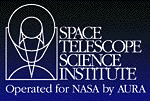New Horizons Spacecraft Answers Question: How Dark Is Space?
Space Telescope Science Institute (STScI)How dark is the sky, and what does that tell us about the number of galaxies in the visible universe? A team of scientists has used observations by NASA’s New Horizons mission to Pluto and the Kuiper Belt to determine the brightness of the cosmic optical background. Their result sets an upper limit to the abundance of faint, unresolved galaxies, showing that there is about twice as much optical light permeating space as can be accounted for by all known galaxies.
